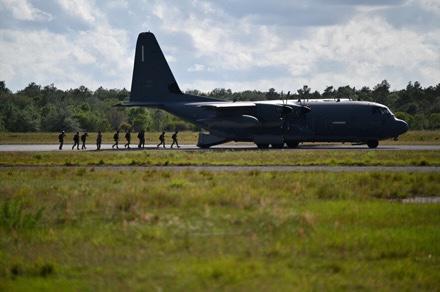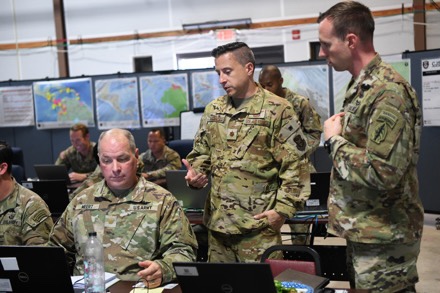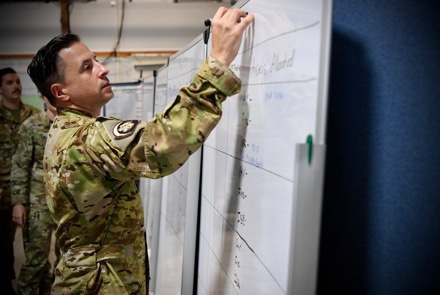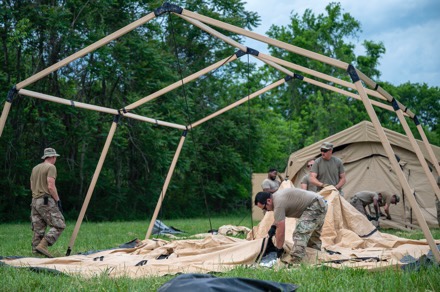
HURLBURT FIELD, Fla. —
HURLBURT FIELD, Fla. – This month, Air Force Special Operations Command, AFSOC, is transitioning the way Air Force Special Operations Forces, AFSOF, present to the joint force.
Following September 11, 2001, AFSOC’s force presentation focused heavily on providing crisis response capabilities and countering violent extremist organizations, or CVEO, through the Joint Special Operations Air Component, or JSOAC, deployment model.
This model, while historically successful in conducting crisis response and countering violent extremist organizations during more enduring operations, does not provide the necessary attributes required to succeed in the new operational environment.
AFSOC’s focus on C-VEO and crisis response has evolved to also include campaigning in the gray zone, employing SOF-peculiar capabilities, and developing and advancing relations with our international partners and allies.

“While the JSOAC model was effective for conducting command and control, or C2, of SOF air assets in recurring fixed deployment locations, the JSOAC was manned through an individual augmentee approach that didn’t properly allow commanders and staff to train, certify and deploy specifically for their deployed mission,” said Maj. Gen. Wolfe Davidson, AFSOC deputy commander. “The JSOAC was not trained or equipped to conduct the joint warfighting functions necessary for effective and adequate mission command. We had to take a look at how we were presenting forces and ask ourselves, ‘Does this look right?’ And if it doesn’t, what does?”
Enter the Special Operations Task Group, or SOTG.
“This change in how we present forces is transformative and drastically enhances AFSOC’s ability to present options to compete with and deter our adversaries below the threshold of armed conflict and add more strategic options for our nation’s leaders,” said Davidson.

Adhering to the U.S. Special Operations Command Comprehensive review, as well as Air Force Chief of Staff Gen. CQ Brown Jr.’s, “Accelerate Change or Lose” priorities, these squadron-based, task-focused groups take a significantly different approach than their JSOAC predecessors in a variety of ways.
While deployed, the JSOAC previously provided impromptu support on an “as needed basis.” The SOTG, unlike the JSOAC, will instead offer forces designed uniquely for each mission.
Additionally, the JSOACs provided operational staffs who relied on spontaneous manning that didn’t train or prepare teams for deployments whereas the SOTGs are tactical units that are manned through the force generation cycle, meaning Air Commandos are training together as they prepare for deployments.
“This new construct will allow us to not only accurately articulate our forces but will also enable us to deliberately develop a more credible, capable, and precise force with these purpose-built teams.” said Lt. Col. James Caldwell, AFSOC C2 Implementation Planning Team lead. “Airmen and their families will have much more predictability regarding deployments and the training that’s required before deploying.”
This predictability is due to the design of force generation model, which consists of four, 150-day phases – individual training, unit training, collective training and validation, and the deployment phase. Commanders will also have more deliberate oversight on deployment preparations which ultimately will increase mission success and drive down the risk to mission.
In addition to this predictability, this new structure of force presentation will enable commanders to more effectively accomplish mission command, which is key as the operational environment continues to shift.
The SOTG at its core, will be a squadron-based, O-5-led unit that will focus primarily on integrating multi-domain SOF air power into joint operations. Once forward, the SOTG will command flight-based echelons called Special Operations Task Units, or SOTUs. Each SOTU will have a unique capability tailored to that AORs requirement. These units may offer but are not limited to AC-130J, MC-130H, Special Tactics, U-28 or even agile combat support.

“This restructure will bring us in alignment with how all other SOF tactical units present forces,” said Lt. Col. Shawnee Williams, AFSOC C2 Implementation Planning Team lead. “It also ensures that AFSOFs unique multi-domain contributions give the Joint SOF community a competitive advantage.
With the first SOTG set to replace a JSOAC this month, the offerings of SOTG capabilities will likely evolve, as they’re structured to support Theater Special Operations Command’s tailored needs in their respective area of responsibilities.
Air Force Special Operations Command Public Affairs

